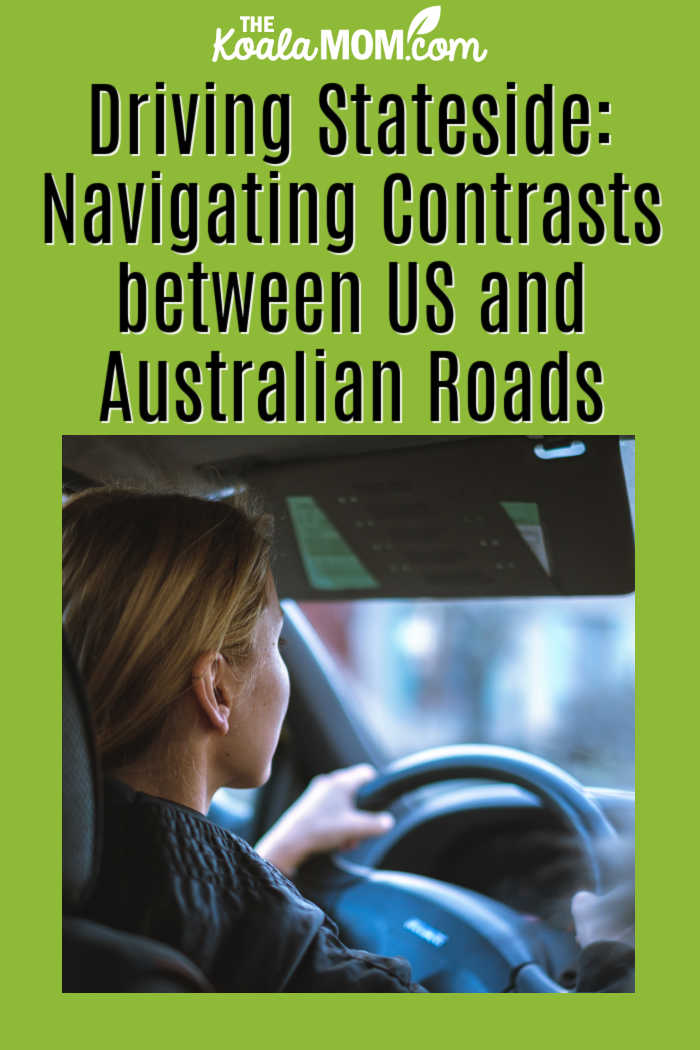One of the challenges of planning a road trip in another country is the thought of driving on unfamiliar roads. American drivers may be daunted by the thought of driving on the left side of the road in Australia, and drivers from Australia may be equally daunted by the thought of driving on the right in the US (or Canada).
From different traffic laws to unique signage and road etiquette, there are plenty of challenges that can catch drivers off-guard. But fear not! With a bit of preparation and some helpful tips, you can still plan a road trip in your dream destination (even if it means driving on the other side of the road!). Read on for the key differences between North American and Australian roads so you can prepare for your adventure with ease.

Differences in Rules and Regulations
The United States have a vast network of highways and roads that are well-maintained and provide easy access to most parts of the country. In contrast, Australia has a more limited road network. It’s important to note that a personal injury lawyer will be your best asset if you get into an accident in either country. And, there are also some significant differences in the rules and regulations governing drivers in the different countries.
In the United States, drivers must always yield the right-of-way to pedestrians, even if they are jaywalking. Drivers must also stop for school buses when their red lights are flashing.
In Australia, on the other hand, drivers do not have to yield to pedestrians unless they are crossing at a marked crosswalk. And while Australian drivers must stop for school buses when their red lights are flashing, they can proceed with caution if there is no one waiting to board or alight from the bus.
Driving on the Left versus the Right
There are a number of key differences between driving on the left side of the road versus the right. For starters, Australians drive on the left side of the road, whereas Canadians and Americans drive on the right. This can be a major source of confusion for visitors from one country to another.
Additionally, Australian roads are often narrower than their American counterparts, and there are often more pedestrians and cyclists sharing the road. Australians also have a reputation for being more laid-back when it comes to driving, which can be both a good and bad thing!
Road Signs and Markings
Road signs and markings in the United States are often different than those in Australia. Here are some key differences to be aware of:
- Australian road signs were influenced by both British and American signs, so there may be slight differences between the signs you’re used to and Australian signs. While road signs are designed to be very clear and obvious, pay careful attention to them and ensure you understand them.
- The USA uses imperial units (miles, yards) while Canada and Australia use metric units (meters, kilometers). This can be confusing when trying to convert between the two systems.
- US roads typically have solid double yellow lines down the center of the road to indicate no passing. Australian roads may have broken yellow lines, which indicate that passing is allowed under certain conditions.
There are many other subtle differences between US and Australian road signs and markings. Be sure to pay close attention when driving in either country to avoid getting into an accident!
Vehicle Safety Features that vary between the US and Australia
There are a few key safety features that vary between vehicles in the United States and Australia. For starters, Australian cars have stricter safety standards overall. This means that things like seatbelts, airbags, and other safety features are required by law in Australian cars. In the US, some of these safety features are optional.
Another big difference is in the way headlights work. In the US, most cars have sealed beam headlights. These are not as bright as the projector headlights that are standard in Australia. This can make driving at night more difficult in the US.
There is a difference in the way child safety seats are used. In Australia, it is mandatory to use a child seat for any child under four years old. In the US, child seats are only required for children under six months old.
Different Types of Vehicles Used by Each Country
Different types of vehicles are used by each country based on the terrain, climate, and infrastructure. In the United States, four-wheel drive vehicles are popular in rural areas with unpaved roads. Sports utility vehicles (SUVs) are also common due to their size and ability to carry more people and cargo. Passenger cars are the most common type of vehicle on American roads.
In Australia, four-wheel drive vehicles are also popular due to the large amount of off-road driving that Australians do. However, SUVs are not as common because they generally have poorer fuel economy than other types of vehicles. Passenger cars are the most common type of vehicle on Australian roads.
Renting a Car in the US vs Australia
Renting a car in the United States and Australia can have some similarities but also some key differences. Here are some points to consider when comparing the two:
- Driver’s License: In both countries, you’ll need a valid driver’s license to rent a car. However, the requirements for international visitors may differ. In the United States, most car rental companies accept foreign driver’s licenses as long as they are in English or accompanied by an International Driving Permit (IDP). In Australia, you can generally use your foreign driver’s license as long as it’s in English. If your license is not in English, you’ll need to carry an official translation or an IDP.
- Age Restrictions: The minimum age to rent a car varies between the two countries. In the United States, it’s typically 21 years old, although some rental companies may require renters to be 25 or older. In Australia, the minimum age is generally 21 as well, but some rental companies may have higher age requirements or charge additional fees for drivers under 25.
- Rental Costs: Rental car rates can vary depending on the location, time of year, duration of the rental, and the type of vehicle. In both countries, it’s common to find a wide range of car rental options, from budget-friendly to luxury vehicles. Comparing prices and booking in advance can help you secure the best deal.

Driving in the US can be a bit of an adjustment for Australian drivers, but with these tips, you’ll be navigating the roads like a pro in no time. With different speed limits, road rules, and even vehicles to look out for, it’s important to remain aware and alert when driving stateside. So take care on your travels – buckle up and enjoy the ride!

3 Comments
The child seat information for the US is way wrong, we have to use a child seat from birth to 4 years or if they’re under 40 pounds. Then after that a booster seat is still required up to a certain age/weight.
Lots of mistakes in this making it confusing!
-In Canada and the US, stop signs are octagonal and yield signs are triangular. In Australia, both stop and yield signs are round. WRONG!! In Australia Stop signs are octagonal and Give Way (yield) signs are triangular.
-US road signs use standard colors (red, yellow, green, blue, and white) to convey information. Australian road signs may use a variety of colors depending on the state or territory. WRONG! The same “standard” colours are used in Australia, the only additional colour used is brown (for tourist attractions)
-Canada and the US use metric units (miles, kilometers) while Australia uses imperial units (feet, yards). This can be confusing when trying to convert between the two systems. WRONG! Canada and US use Imperial (miles, feet, yards, inches). Australia uses Metric (kilometres, metres, centimetres)
Bec – thanks for the message. I’ve tried to fact-check my article again and update it, but your corrections weren’t correct either. Canada does NOT use imperial units any longer – if you’re driving here, all the road signs are in metric.